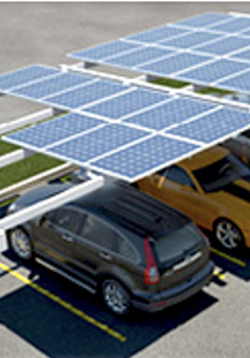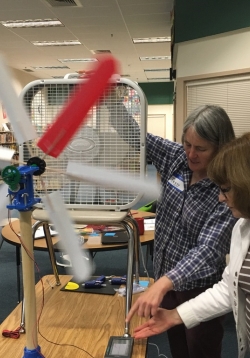Unit Plan: A Community Powered by Renewable Energy
In this three-part comprehensive place-based and project-based unit, students will learn and apply rebnewable energy content to devise action plans at an individual, family, and local level. Students will use primary and secondary research explore energy...
Part 2 - Lesson 2: Wind Energy
Students will learn about wind and how wind varies across geographies. Students will use Vernier Wind Turbine kits or homemade wind turbines to experiment with blade angles and wind speed. During experimentation, students will collect data as blade angles...
Part 3 – Lesson 1: A Plan for Renewable Energy Goals
Students will utilize their home energy audits from Part 1, the information they gathered from the wind and solar assessments in Part 2, and the knowledge they gained from the solar project in Part 2 to devise a plan for your city or town to meet renewable...
Unit Plan - Chemical Differences in Emergency Energy Sources
Students develop atomic and molecular models of energy resources, analyze combustion of various fuels and build circuits with Photovolatic (PV) modules to evaluate and suggest revisions to a disaster preparedness supply list. They then research and...
Let’s Get Cooking!
The purpose of this lesson is to provide students with a hands-on experience using the sun to cook cornbread or cookies. Students will also learn to use an infrared thermometer. There is also an optional extension for the class or individual students to...
Build the Ultimate Solar Oven
The purpose of this lesson is to take everything the students have learned and experienced up to this point and use it to build their own Ultimate Solar Oven using items found at school, home, the Dollar store or home improvement store for under 5 dollars...
Solar Car Challenge: Background Research on Car Design
Students will play around with the solar car kits to familiarize themselves with the materials in preparation for the solar car engineering challenge.
Solar Car Challenge: Team Brainstorm
Students will play around with the solar car kits to familiarize themselves with the materials in preparation for the solar car engineering challenge.
Solar Car Challenge: Develop Your Solution
Students will play around with the solar car kits to familiarize themselves with the materials in preparation for the solar car engineering challenge.
Solar Car Challenge: Test Your Solution
Students will play around with the solar car kits to familiarize themselves with the materials in preparation for the solar car engineering challenge.



